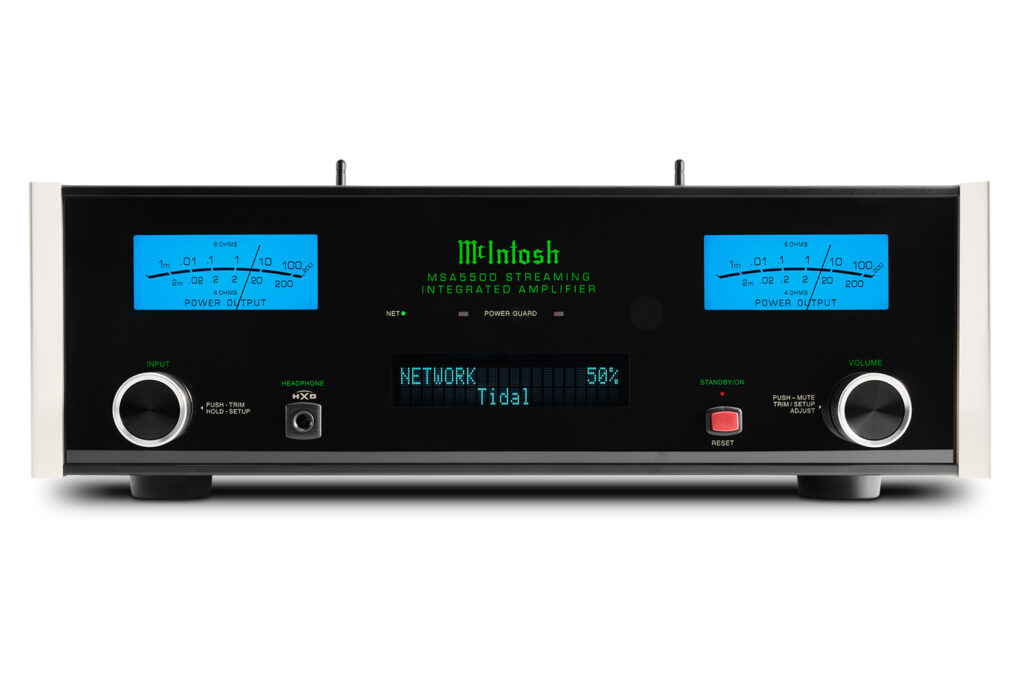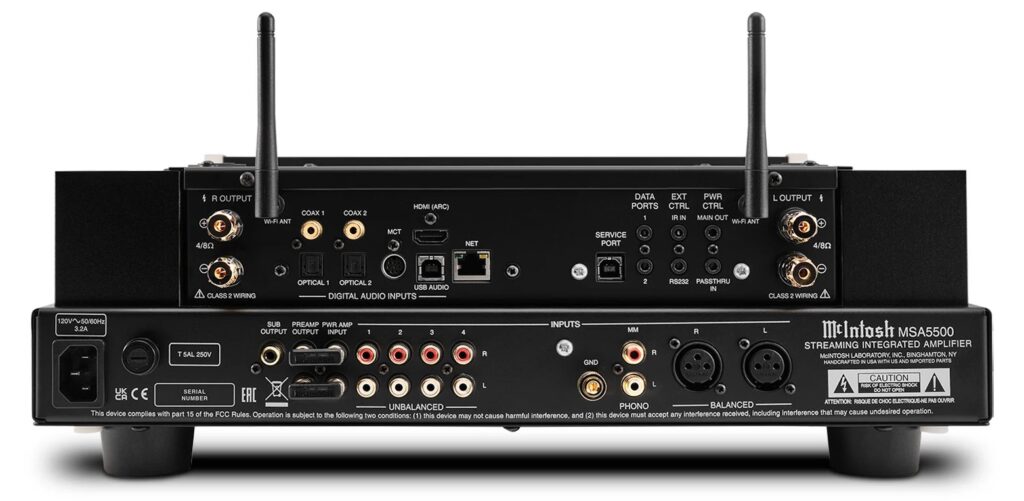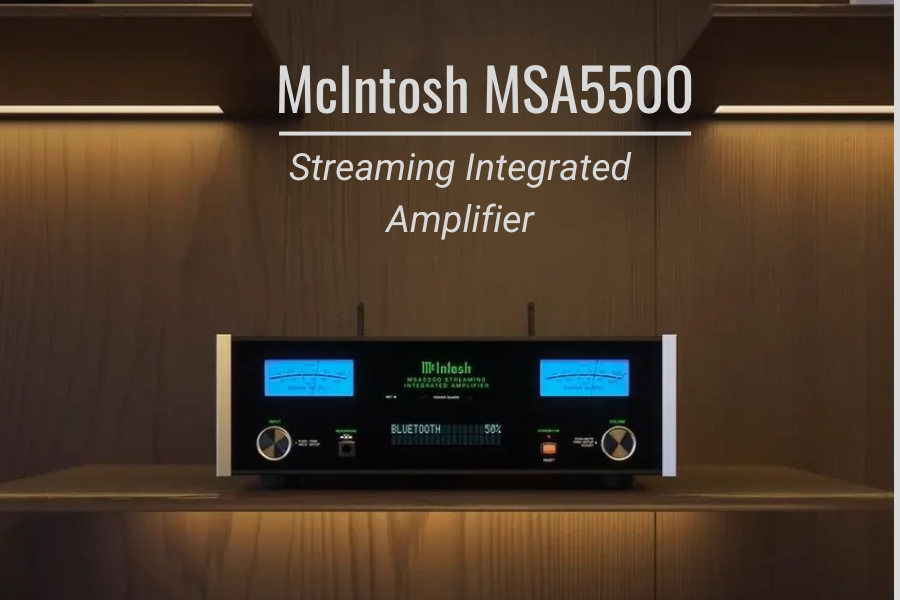McIntosh started in 1949 and they have great attention to detail in every single product. All products are handmade and they are tested vigorously before release, this is why every McIntosh product is loved by audiophiles around the world. In this article, we will review the McIntosh MSA5500 Streaming Integrated Amplifier and look at the different features it has, and see if it is better than the tough competition out there.
Review
Over the past few years, streaming-integrated amplifiers like the Marantz Model M1 and the McIntosh MSA5500 have become increasingly popular, they are all-in-one devices that combine the features of amplifiers and streamers. These features used to require separate components, and would end up costing you more than if you bought an all-in-one device. An all-in-one product also means easier device management, fewer cables, less clutter, and less space needed for a music system that delivers amazing performance.
The McIntosh MSA5500 has the classic aesthetic that McIntosh is known for. It has a front panel with volume and input controls, a headphone jack, a vacuum fluorescent display that gives you essential information, and there are two blue power output meters. There are McIntosh heatsinks on the sides, and the device comes in a black finish with silver and chrome accents.

The McIntosh MSA5500 has a Class A/B amplifier section that delivers 100 watts at 8 ohms and 160 watts at 4 ohms. The new power supply has very little distortion at 0.005%, and a 1.8 dB dynamic headroom. The streaming amplifier also has an ESS 8-Channel DAC, with 4 DACs per channel. The McIntosh MSA5500 is compatible with Apple Airplay, Google Cast (previously called ChromeCast), Spotify Connect, and Tidal Connect. This device is also Roon Ready and has Bluetooth for connecting to your phone.
On the back, there are connections for almost every application. There are two coaxial inputs, two optical TOSLINK inputs, a USB input, an Ethernet port, and an HDMI ARC port. There is an IR Input that can connect to an IR receiver, and there are two data ports to give commands to McIntosh CD players so that your remote will control both the MSA5500 and the CD player. There are a pair of balanced inputs, four analog inputs, a moving magnet phono input, one subwoofer output, two preamp outputs, and two main amplifier inputs if you want to add another amplifier to your system. You also get gold-plated speaker binding posts for connecting your speakers directly.

For headphone users, there is a Headphone Crossfeed Director (HXD), which mixes some of the left channel and right channel sound and applies filters and delays to simulate the experience of listening to a stereo speaker. If you don’t want this feature when using your headphones with the McIntosh MSA5500, there is a toggle to enable or disable HXD.
McIntosh also included a ton of their technology in the MSA5500, which includes Power Guard, which monitors the output signal for overdriving and makes real-time micro-adjustments to the input signal to prevent harsh-sounding clipping that could potentially damage your speakers. The Sentry Monitor protects against short circuits, and the Home Theatre PassThru allows for seamless integration with home theatre systems.
Let’s talk about the performance of the McIntosh MSA5500. The specs on paper look great, but what matters most is the implementation. I tested this streaming amplifier with the Bowers & Wilkins 801 D4 Signature speakers, and my subwoofer choice was the SVS PB17 Ultra R|evolution. The MSA5500 had no problem powering my speakers, the sound was natural and warm, the vocals were clear and had every detail, and the bass was deep. The imaging and soundstage were great, and each instrument was detailed.
Verdict
The McIntosh MSA5500 Streaming Integrated Amplifier retails for $8000, it is an impressive all-in-one device that stays true to the brand’s legacy of premium craftsmanship and high-fidelity sound. While the competition is fierce, McIntosh’s attention to detail and sound performance make the MSA5500 a solid choice for speaker systems.
